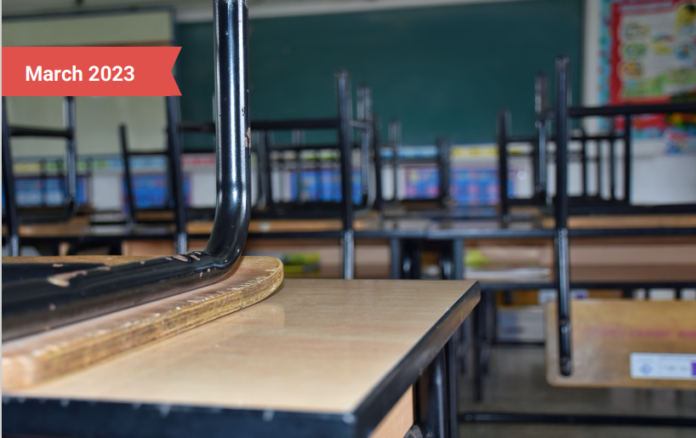New policy brief shows that Wisconsin’s outdated “Three-Year Rolling Average” system costs taxpayers over $359 million dollars, should be replaced with dynamic enrollment counts.
The News: The Wisconsin Institute for Law & Liberty (WILL) published a new policy brief, “Ghost Students: The Inefficient Allocation of Taxpayer Dollars in Wisconsin’s Schools.” This paper shows that the state’s “Three-Year Rolling Average” is an obsolete system for quantifying attendance and funding for schools. Ultimately, the report highlights how Wisconsin taxpayers fund students who do not exist in school districts, while offering some better alternatives to Wisconsin’s current education spending method.
The Quote: WILL Research Director, Will Flanders, PhD, stated “Wisconsin’s system for education spending should follow the student—no matter which school they determine is best for them and their family. Other states fund education more efficiently, and there is little reason as to why Wisconsin could not implement similar systems.”
Background: Wisconsin uses what is known as the “Three-Year Rolling Average” in counting students and for calculating school district revenue limits. Under this system, three years of enrollment data are used in calculating how much money the district is able to collect from state and local taxpayers.
However, since the beginning of the COVID-19 pandemic, enrollment in Wisconsin schools has dropped by more than 3%, with some districts suffering even greater declines. Wisconsin’s current system misallocates funds to districts—for students who no longer attend school in the district. This means that Wisconsin taxpayers are still paying for students that are no longer in the system.
Key Findings:
- The “Three-Year Rolling Average” is an antiquated system of school attendance, costing taxpayers millions. We know where each student is attending school in Wisconsin on a daily basis. Our school funding system should reflect that—rather than being years behind.
- Statewide, Wisconsin funds more than 20,000 “ghost students,” children outside of the school system who are still counted as being enrolled. A net of about 20,703 students who are no longer in the system are funded by state taxpayers.
- More than $359 million dollars is misallocated to “ghost students” in Wisconsin. Due to the three-year rolling average, Wisconsin taxpayers are on the hook for hundreds of millions for students that no longer attend school in many districts.
Policy Recommendations: This policy brief provides two solutions, in efforts to improve the future of education spending in Wisconsin: eliminate or phase-out the three-year rolling average, and replace it with dynamic enrollment counts. This could be achieved by basing funding on the most recent enrollment count from the previous year, while more frequent counts could be possible as well.
Read More: “Ghost Students: The Inefficient Allocation of Taxpayer Dollars in Wisconsin’s Schools,” March 2, 2023


